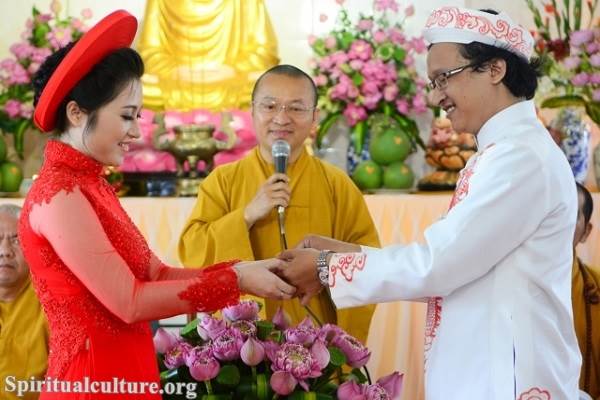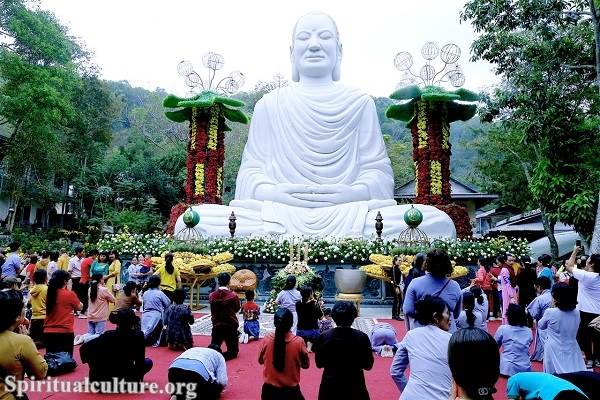We long to love and be loved. Yet often, in that very longing, we get entangled — confused between what brings us closer to truth and what binds us in suffering. Buddhism offers a profound mirror to examine the nature of our relationships. Are we loving — or clinging? Are we freeing — or controlling?
In this article, Spiritual Culture invites you to explore a liberating distinction: the difference between attachment and love. This insight, drawn from the heart of Buddhist wisdom, can transform the way we relate to others, and more deeply, to ourselves.
We will explore what attachment means in the Buddhist context, how it differs from genuine love, why we often mistake one for the other, and how we can shift toward relationships rooted in compassion, freedom, and inner stillness.
Attachment vs Love: The Roots of the Confusion
What is Attachment in Buddhism?
In Buddhist teachings, attachment (Pāli: taṇhā) is not simply affection or care. It refers to craving, clinging, or grasping — the mind’s desire to hold, possess, or depend on something or someone for its sense of security or identity.
The Three Poisons and Attachment
Attachment is one of the “Three Poisons” in Buddhism — along with aversion (hatred) and delusion (ignorance) — that cause dukkha, or suffering.
“From craving arises sorrow, from craving arises fear. For one who is free from craving, there is no sorrow, so how could there be fear?”
— Dhammapada, verse 216
Attachment manifests as:
- Needing someone to behave a certain way for us to be happy
- Fear of losing them or being alone
- Wanting to control or own the relationship
- Mistaking dependency for love
It is not the presence of affection that causes suffering, but the grasping — the insistence that things or people must remain the way we want.
What Is True Love in Buddhism?
Love, in contrast, is defined by non-attachment, generosity of spirit, and freedom. The Buddha identified four aspects of true love, known as the Brahmavihārās (sublime attitudes):
- Mettā – Loving-kindness: the wish for others to be happy
- Karuṇā – Compassion: the wish to alleviate suffering
- Muditā – Sympathetic joy: delight in others’ joy and success
- Upekkhā – Equanimity: a balanced, spacious heart that lets go
Love Is Not Possessiveness
True love does not seek to possess, bind, or manipulate. It allows the beloved to be free, to grow, to change.
“If you love someone but you cling to them, it is not love — it is attachment, and attachment is suffering.”
— Thich Nhat Hanh
True love is active, not dependent. It is about being, not owning. It is rooted in mindfulness, not fear.
Why We Confuse Attachment with Love
Cultural Conditioning and Emotional Need
From childhood, we are often taught to associate love with possession: “You’re mine,” “I can’t live without you,” “You complete me.” These messages romanticize dependency.
We mistake emotional neediness for depth of love. But in truth, that need arises from lack, not abundance. Buddhism teaches that true love arises not from lack but from inner wholeness.
Ego’s Desire for Security
The ego seeks permanence and identity through relationships. It wants to define itself by the other: “If you love me, I am worthy.”
Attachment is the ego’s attempt to find stability in what is inherently unstable — people, feelings, conditions. This leads to suffering when things inevitably change.
“All conditioned things are impermanent. Strive on with diligence.”
— The Buddha’s last words, Mahāparinibbāna Sutta
The Fear of Letting Go
To love without attachment is to risk vulnerability. The mind fears: What if they leave? What if I’m not enough?
But Buddhist insight encourages us to lean into that fear and discover the freedom beyond it.
“You only lose what you cling to.”
— The Buddha
Signs You’re in Attachment, Not Love
Clinging vs Allowing
- Attachment says: I need you to be a certain way for me to feel okay.
- Love says: I honor your journey, even if it changes or moves away from me.
Control vs Compassion
- Attachment controls the relationship to avoid fear or discomfort.
- Love shows up even when it’s hard, without needing to dominate.
Fear of Loss vs Presence
- Attachment fears loss, and so lives in anxiety.
- Love lives in the present, cherishing each moment without grasping.
Dependency vs Wholeness
- Attachment says: Without you, I am incomplete.
- Love says: I am whole, and I share myself with you freely.
Transforming Attachment into Loving Awareness
Step 1: Cultivate Mindfulness
Mindfulness is the foundation of recognizing attachment. When we notice our grasping, we can choose to pause.
Try reflecting:
- “Am I reacting from fear or love?”
- “Am I trying to control, or am I truly present?”
Mindfulness helps us create space — to observe without being overwhelmed by emotions.
Step 2: Practice the Brahmavihārās
These four immeasurables can be cultivated through meditation:
- Loving-kindness meditation (Mettā Bhāvanā): “May you be happy, may you be safe…”
- Compassion meditation: Attune to others’ suffering without being overwhelmed
- Sympathetic joy: Rejoice in the happiness of others without envy
- Equanimity: Remain centered in change and uncertainty
Each of these practices helps soften the clinging mind and opens the heart.
Step 3: Embrace Impermanence
Impermanence (anicca) is not a threat — it is the truth of life. When we embrace it, we begin to love without fear.
“Just as a mother would protect her only child with her life, even so let one cultivate a boundless love toward all beings.”
— Metta Sutta (Sn 1.8)
Step 4: Let Go with Compassion
Letting go does not mean abandonment. It means allowing the other to be free, and releasing our grasp.
To let go is not to stop loving — it is to love with open hands.
Real-World Reflections: Love in Practice
Parenting Without Attachment
A mindful parent learns to love the child without projecting their own unmet needs. They guide, support, and protect — but also allow space for the child to grow into themselves.
Romantic Love with Awareness
A partner rooted in true love does not say, “You belong to me.” Instead, they say, “I walk with you, and I cherish your freedom.”
They understand that love is not control but connection — deep, present, and without demand.
Friendship Beyond Expectation
A friend with spiritual maturity does not count favors or fear distance. They rejoice in each other’s happiness and grieve with each other’s sorrow — without ownership.
What Sacred Texts Say About Non-Attachment
Though Buddhism is clearest in articulating non-attachment, similar themes arise across traditions:
- Bhagavad Gītā (Hinduism):“Act without attachment to the results.” (2.47)
→ Action guided by love, not outcome.
- Christianity (1 Corinthians 13:4–5):“Love is patient, love is kind… it does not insist on its own way.”
→ True love is not possessive.
- Tao Te Ching (Taoism):“Love deeply and you will be hurt, but live deeply and you will be alive.”
→ Letting go is not weakness, but flow.
These teachings align with the Buddhist path: real love arises when we are no longer grasping.
Reflect and Reimagine: Choosing Love Over Clinging
If love is to be a sanctuary, not a prison, we must learn the difference between holding and holding on.
Buddhist wisdom does not ask us to reject love. It invites us to purify it — to love more deeply, freely, and wisely. To move from need to compassion. From clinging to clarity. From fear to presence.
Ask yourself:
- Where in my relationships do I feel fear or control?
- How can I love without needing to possess?
- What would love look like if I trusted impermanence?
Let go — not of people, but of illusion. Love — not for self-gain, but for the freedom of all. In that shift lies peace.
“Let all beings be happy. Weak or strong, of high, middle, or low estate, small or great, seen or unseen… May all beings be happy.”
— Metta Sutta
And in that wish, love becomes what it was always meant to be: boundless, fearless, and free.



